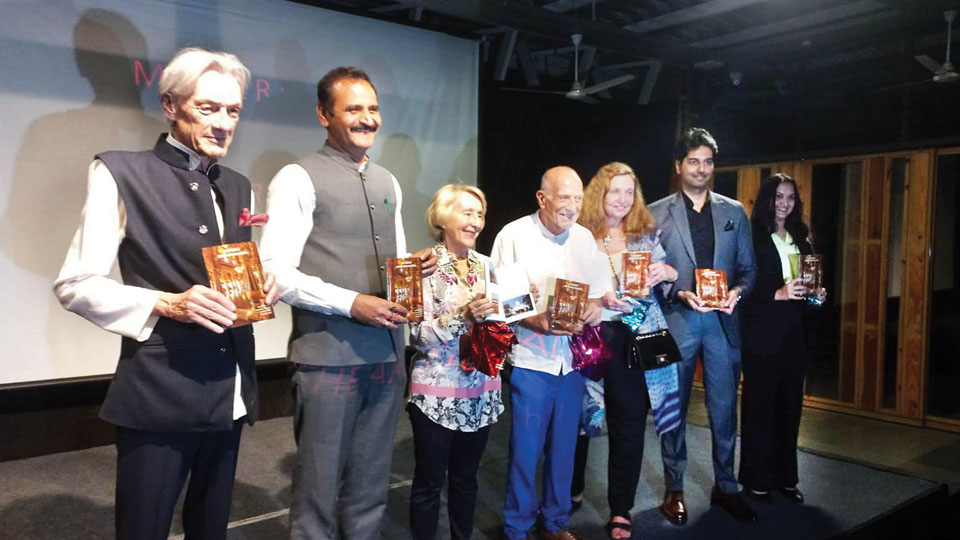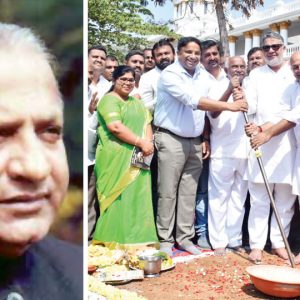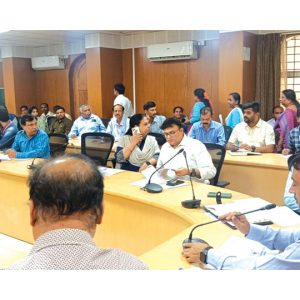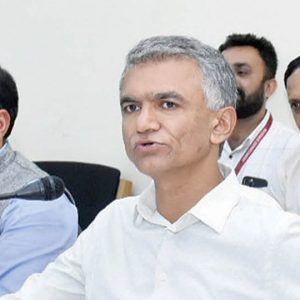Provides pictorial details of the region’s abundant military, royal, civic and religious buildings
Mysore/Mysuru: ‘Mysuru-Srirangapatna Guidebook’, that unveils the rich heritage of Mysuru and Srirangapatna was launched at the Wadiyar Centre for Architecture in city recently. The guidebook was released by Prof. N.K. Lokanath, Vice-Chancellor of University of Mysore.
Mysuru and Srirangapatna boast numerous tourist attractions, offering the potential for year-round footfall. This guidebook seeks to draw more visitors to both well-known and lesser-known sites, contributing to the livelihoods of those dependent on tourism.
Brought out by the Deccan Heritage Foundation, the guidebook is the first to provide a historical background on the wealth of military, royal, civic and religious buildings found in Mysuru and Srirangapatna. The text, authored by specialist scholars and architectural conservationists is generously illustrated with splendid, newly commissioned photographs, maps and plans.
The book is authored by George Michell, architectural historian, specialising in the Hindu, Mughal and Sultanate traditions of India, Malavika Murthy, conservation architect, Caleb Simmons, Executive Director of Online Education, Professor of Religious Studies and Faculty Director of the Interdisciplinary Studies Programme at the University of Arizona in Tucson and Shivendra Urs, a journalist and digital content specialist.
Speaking after the guidebook release, George Michell, also the co-founder of the Deccan Heritage Foundation, highlighted Mysuru’s historical significance as the home to the Wadiyar line of rulers since the sixteenth century. The Wadiyar kings and queens, starting from the 18th century, have left an indelible mark on the city with palaces, colleges, hospitals, markets, court houses and temples.
With the abundance of architectural marvels in Mysuru and Srirangapatna attracting a large number of daily visitors, Michell emphasised that, until now, there was a lack of a professional guidebook to assist them in their tours. The newly launched guidebook aims to fill this void, offering both tourists and locals valuable insights into the historical and cultural richness of the region.
Nestled on the city’s outskirts, the hill shrine of Sri Chamundeshwari stands as a testament to the protective reverence bestowed upon it by the Wadiyars. Goddess Chamundi remains a revered figure, drawing worshippers to the sacred site.
A mere half-hour journey away lies Srirangapatna, positioned on an island in the Cauvery River. Here, the remnants of a historical fortress bear witness to the fortified headquarters of Haidar Ali and Tipu Sultan. In the eighteenth century, these influential figures temporarily seized the throne of Mysore, leaving an indelible mark on the region’s history. All these aspects have been covered and illustrated in the guidebook. Michell further underscored the importance of disseminating information for tourists, suggesting that combining interesting facts about the sites with proper information dissemination can facilitate easier access to these destinations.
He said that the guidebook has tourist maps detailing sites, routes, distances and circuit plans, believing it would greatly benefit tourists in planning and enhancing their visits. Providing tourists with comprehensive information and guidance on routes, Michell concluded, holds the key to unlocking the full tourist potential of the region.
Dr. Helen Philon, archaeologist, scholar and academician, Stephane Bloch Saloz, co-founder of the Deccan Heritage Foundation, Elena Werner of the American Friends of the Deccan Heritage Foundation, Shivendra Urs and Malavika Murthy were present.








Recent Comments